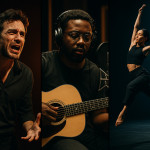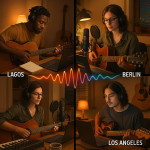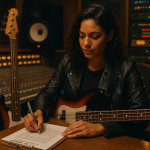Pitching original scores for indie games: timelines, asset packs and license fees
Original music elevates an indie game from memorable to unforgettable. Yet many studios struggle to balance cost, schedule and ownership when commissioning a bespoke soundtrack. This guide unpacks realistic timelines, compares asset packs with custom scores and clarifies license fees so you can pitch your music services with confidence—and win the job.
Why an original score trumps generic asset packs
Royalty-free libraries tempt budget-conscious studios, but formulaic loops rarely capture a game's unique mechanics or emotional beats. A tailored score can:
- Improve player retention by reinforcing narrative arcs and reward cycles.
- Boost discoverability—streamers and press highlight games that sound fresh.
- Unlock multiplatform revenue via vinyl, streaming and concert performances.
Studios weighing options frequently read up on soundtrack vocal rates. Position your pitch as the logical next step: bespoke music that scales with their marketing roadmap.
Decoding indie audio budgets
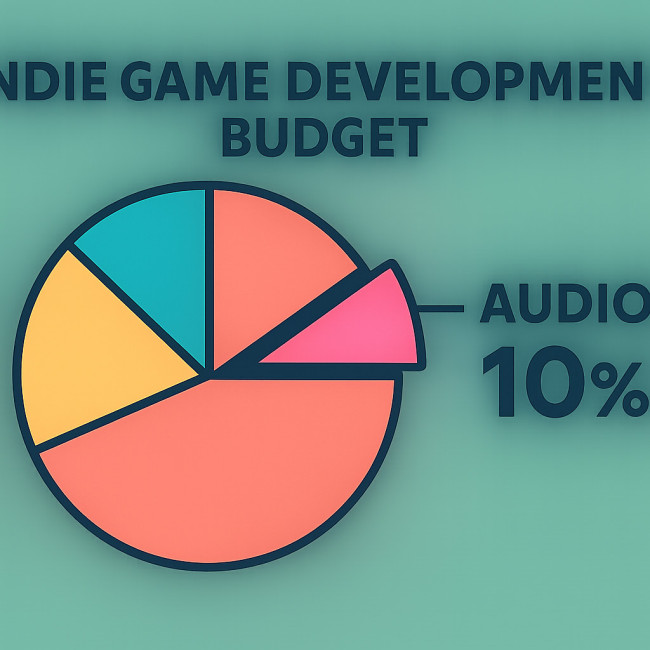
Based on the GameSoundCon Industry Survey and recent publisher reports, indie teams devote 5 – 10 % of total production spend to audio. For a €250 000 project, that means €12 500 – €25 000 shared between sound design and music. Composers who quantify this slice up front remove guesswork for producers.
Source : GameSoundCon Survey 2023
Asset pack vs. custom score: a quick comparison
| Criteria | Royalty-Free Pack | Original Score |
|---|---|---|
| Up-front cost | €20 – €300 per track | €300 – €1 200 per finished minute |
| Creative fit | Generic, limited editing | Tailored motifs and adaptive layers |
| Revision cycles | None | 2 – 3 rounds included |
| IP control | Non-exclusive | Exclusive or buy-out options |
| Long-term revenue | No soundtrack sales | Vinyl, streaming, concert licensing |
Highlighting these trade-offs during your pitch frames budget discussions around value, not just price. If the studio dreams of releasing a vinyl edition, an exclusive score is the only viable route.
Timeline benchmarks you should share
Pre-production (1 week)
Receive the design document, study temp tracks and agree on reference palettes. A short call with the art director aligns sonic tone with visual style. Integrate remote composer–singer workflows early if live vocals are planned.
Theme conception (2 weeks)
Deliver three motif sketches. The studio picks one and requests tweaks. Rapid prototyping keeps feedback loops tight; aim for stems usable in vertical remixing.
Production & iteration (4 – 8 weeks)
- Write, orchestrate and mix adaptive layers.
- Provide layered vocal stems if vocals feature.
- Drop weekly WIP builds in the game engine to check sync with level pacing.
Polish & implementation (2 weeks)
Final mix compliance (LUFS ‑14 for PC, ‑23 LUFS for consoles), middleware looping tests and bug fixes.
Marketing assets (1 week)
Create 90-second trailer cuts and looping social snippets. This often coincides with soundtrack-on-Steam or Bandcamp uploads.
License fee structures that win indie approvals
You can present three tiers:
- Non-exclusive license – discounted rate, you retain rights to reuse motifs in other projects after a 24-month embargo.
- Exclusive license – studio owns worldwide game usage; you keep soundtrack distribution rights and collect PRO royalties.
- Full buy-out – higher fee; studio controls all media, sequels and derivative works.
For reference, a 15-minute exclusive indie soundtrack typically lands between €6 000 and €12 000. Include clear definitions of “game”, “platform” and “derivative” to prevent scope creep.
Writing the pitch: actionable tips
- Lead with emotion. Open your email by describing how the first boss fight sounds before you quote numbers.
- Add social proof. Link to a playlist, Steam reviews mentioning your music or collaborative musician listings that showcase teamwork.
- Present a sliding budget. Offer options at €8k, €12k and €18k tied to clearly stated deliverables.
- Show your workflow. A one-page diagram of milestones and file formats reassures producers.
Mini-quiz: Are you pitch-ready?
FAQ
- How many minutes of music does an average indie game need?
- Most 6-hour playtime titles thrive on 20 – 30 minutes of adaptive music. Looping and vertical remixing cover additional gameplay without ballooning cost.
- Should I quote per track or per minute?
- Per finished minute is industry standard and dovetails with development estimates. It also accommodates in-game loops and stems more flexibly than per-track pricing.
- What happens if the release date slips?
- Add a hold-fee clause: after 120 days delay you invoice 20 % of the remaining balance each additional month to reserve calendar space.
- Can I reuse unreleased cues?
- Only under a non-exclusive deal. Exclusive or buy-out agreements prohibit motif reuse. Always spell this out to protect both parties.
- Do I need a performing rights organization (PRO)?
- Yes. Even small games generate streaming and YouTube revenue. Register works with your local PRO so you collect backend royalties automatically.
Next steps
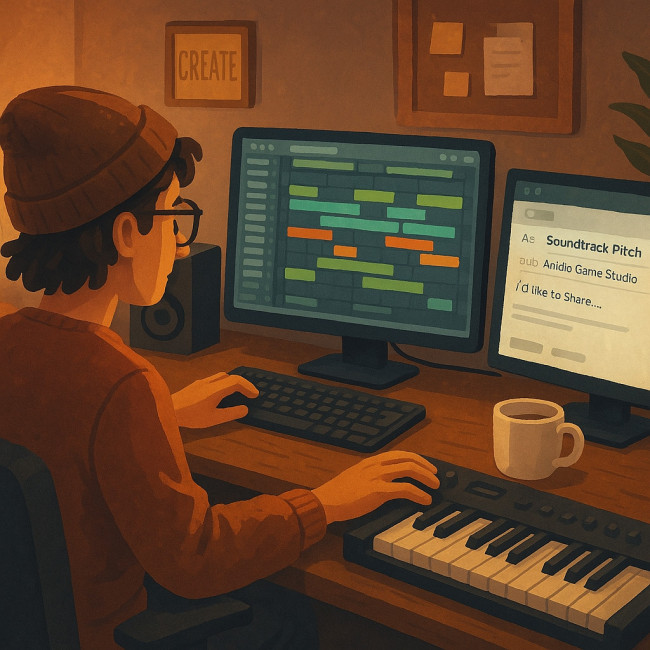
Ready to turn your DAW sessions into paid game gigs? Package your best adaptive demo, outline the five-stage timeline above and include license tiers that fit varying indie budgets. Producers will feel you've done their homework—and you'll land more contracts.
CTA: Download our free pitch deck template and start emailing studios today.
